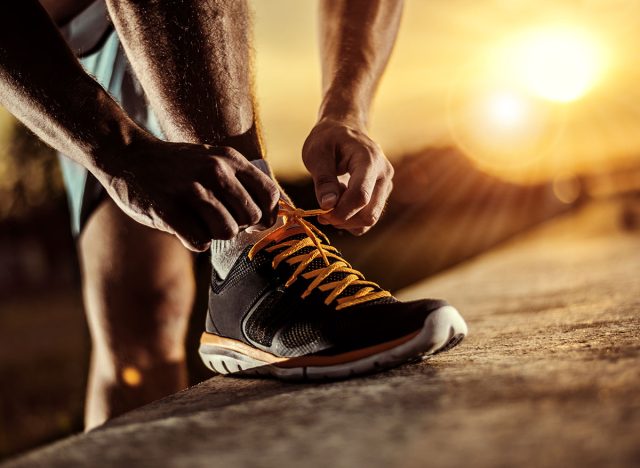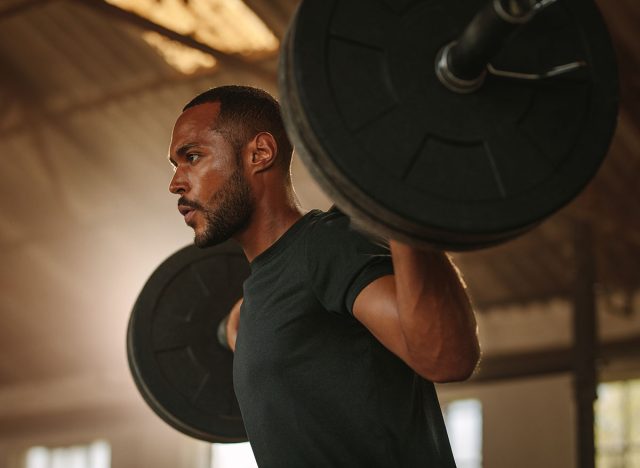I'm a Running Coach And This is How I Would Start My Running From Scratch

Dr. Casey Guthmiller, PT, DPT (@r4ucoaching) is a running coach and social media influencer who shares viral videos about how to maximize your workouts via running. In a recent video, he reveals the best way to get started with running if you are a beginner. "If I could start my running career over from scratch, here's exactly what I would do," he says at the start of the clip.
Start By Walking

"First, I'd walk. I'd just walk," he says about how to get started in running. "As a society who spends a lot of time sitting at desks, expecting to go straight from this to running can often be too much too soon, and lead to injury, walking is an underrated precursor to running."
RELATED: 7 Best Snacks For Protein and Fiber, According to Dietitian
What Are the Health Benefits of Walking?

Why should you walk? Brisk walking can help you maintain a healthy weight and lose body fat, prevent or manage various conditions, including heart disease, stroke, high blood pressure, cancer, and type 2 diabetes, says the Mayo Clinic . It can also help improve cardiovascular fitness, strengthen your bones and muscles, improve muscle endurance, increase energy levels, improve your mood, cognition, memory and sleep, improve your balance and coordination, strengthen immune system, and reduce stress and tension.
Then, Add Strength Training

Another way to prepare your body for running? Hit the gym. "Second, I would strength train just three to four exercises. Twice a week is enough. Get strong to run. Don't run to get strong," he explains.
RELATED: Studies Show These are Proven Ways to Lose Visceral Fat
What Are the Benefits of Strength Training?

According to the Mayo Clinic, strength and weight training help reduce body fat, preserve and increase lean muscle mass, and burn calories more efficiently. Strength training may also help you:
- Develop strong bones
- Manage your weight
- Enhance your quality of life
- Manage chronic conditions
- Sharpen your thinking skills
Go On Run Walks

"Third, I'd add some running bouts to my walks, walking for a certain period of time, running for a certain period of time," he says. "I'd gradually build this up until I could run for 15 minutes straight, 30 minutes straight, and 60 minutes straight. 80 to 90% of this running would be slow and easy."
💪🔥Body Booster: If you want to start running, prep your body by walking and doing strength training.
@r4ucoaching If I could start my running career over from scratch, these are 3 of the main steps I would take. Running & strength programs incorporating these 3 steps are just part of what's included in the app for beginner runners, early-released this Friday (11/10). Your strong and healthy running foundation awaits! I hope to see you Friday!! -Casey #beginnerrunner #newrunner #howtostartrunning #runningtips #running ♬ Good Life (Instrumental Beats) – Hip Hop Hitmakers




